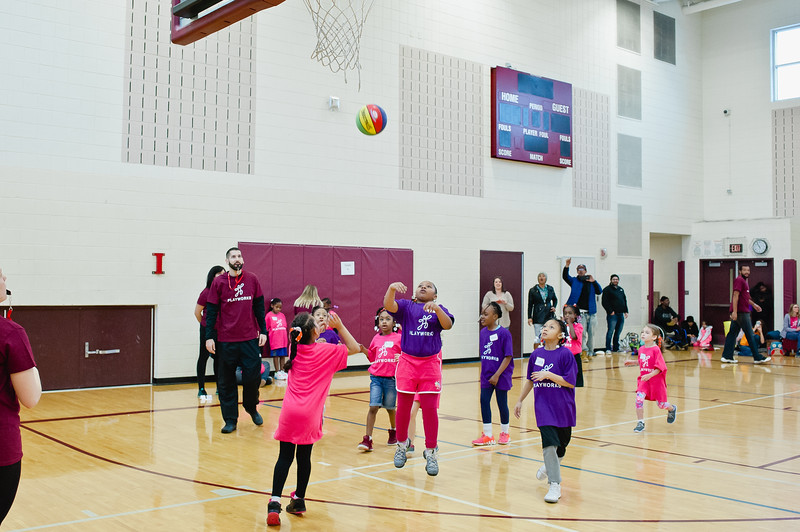Basketball

Large Group (10 and up)
Grades 1-2
Balls
Development Goal
To develop leadership, teamwork, hand-eye coordination and depth perception.
Before You Start
- Divide players into teams of ten to twelve players.
- There are five players on the court, per team – one center, two forwards, two guards.
- The court is divided into two halves; at the center of each end is a bottomless net basket, suspended by a backboard 10′ high.
- On the court, foul-shot lines and an arc are on both halves, in front of and under the basket.
Set Up
Use a standard court size is 92;(28 m) x 50′ (15 m) with two basketball hoops.
How to Play
- The game begins with a jump ball in the center of the court with each team’s center jumping to attain possession. The players begin on the opposite half court of their goal basket.
- The team who gains possession of the ball is the offense, the team that does not have the ball is the defense.
- The players must dribble the ball down the court bouncing the ball with one hand for every two steps taken.
- A ball going out of play over the boundaries stops the game. The ball is thrown back into play by the opposing team of the person who last touched the ball.
- Points are scored when the ball passes through the net. Foul shots equal one point; a basket made behind the arc equals three points; all other baskets equal two points.
- After a basket is made, the team that did not score is granted possession; they must throw the ball into play behind the boundary, under the scored basket.
A foul and two foul shots (free shots without interference by defense) are granted to the offended team when:
- A defensive player interferes with the offensive player by making body contact with his/her hands.
- An offensive player runs into a planted (standing still) defensive player.
- Unnecessary and deliberate tripping, pushing or inappropriate language occurs.
Violations by the player handling the ball are:
- Turnovers: possession of the ball switches teams and the ball is thrown into play from outside the boundary nearest to the violation.
- Traveling: the ball is carried for more then two steps; the player stops moving and holds the ball with both hands and then moves his/her pivot foot.
- Double Dribbling: the ball is dribbled with both hands at the same time; the ball is dribbled, then held with both hands, and then dribbled again (to avoid this violation, the player must either pass or shoot the ball).